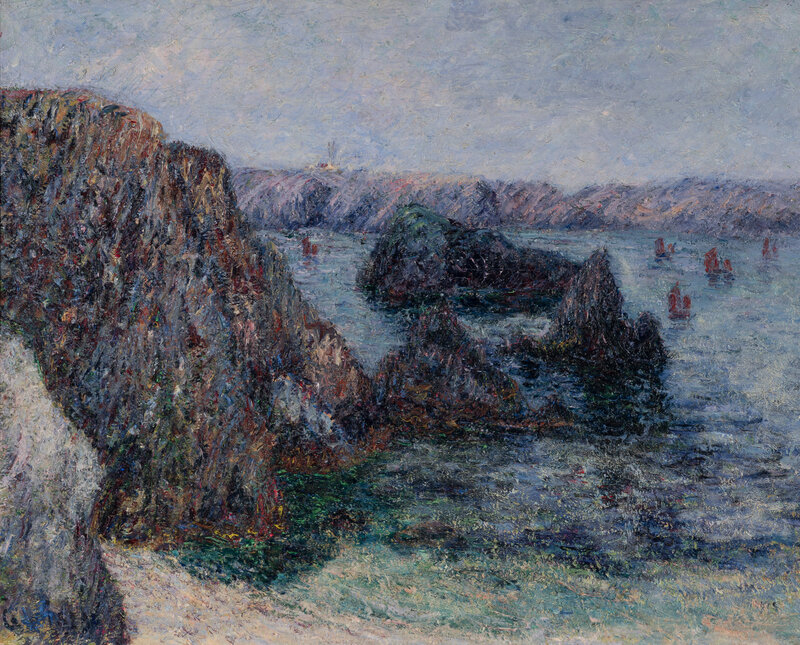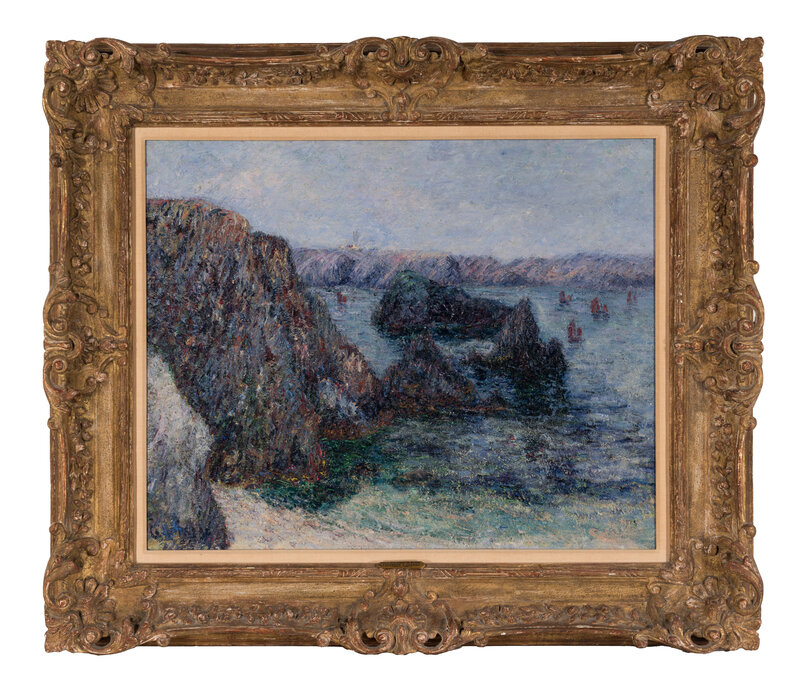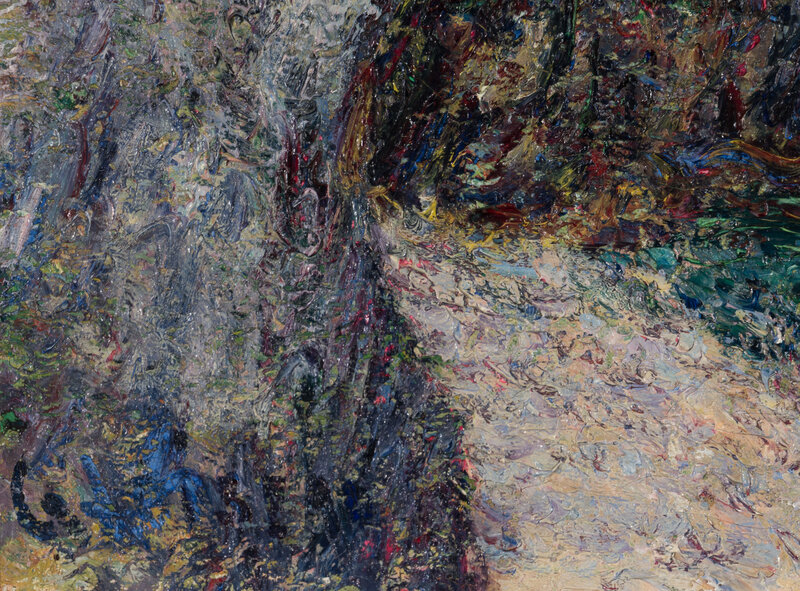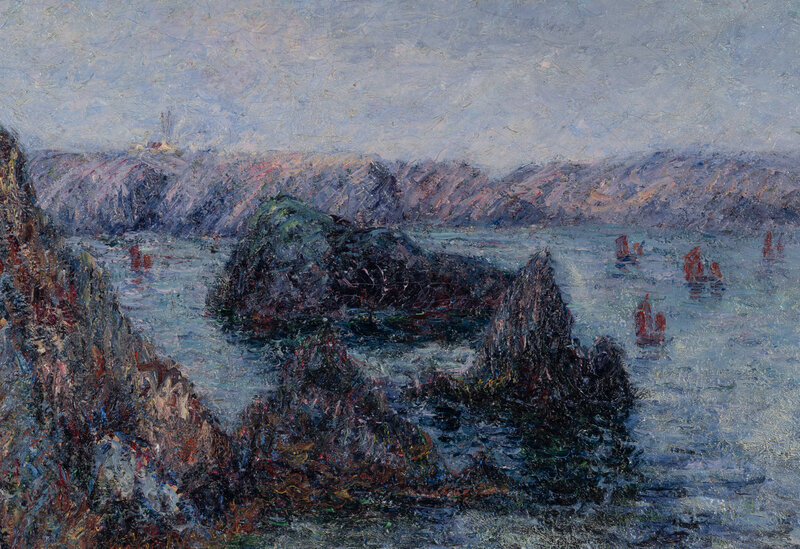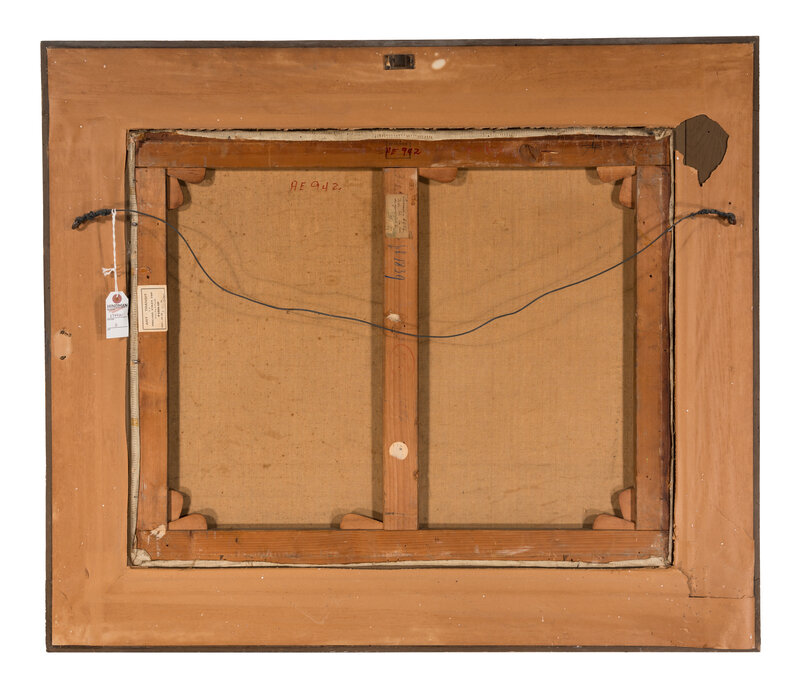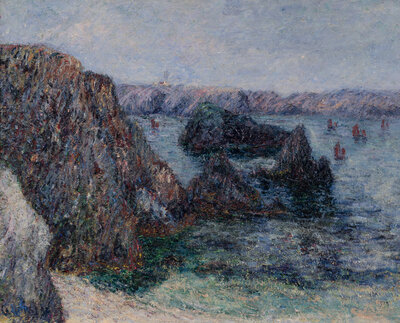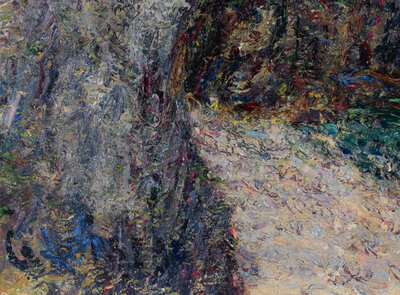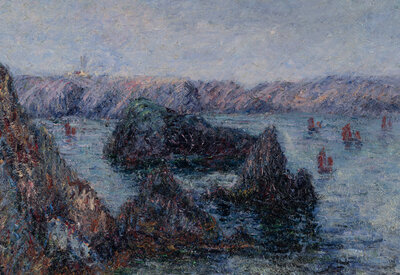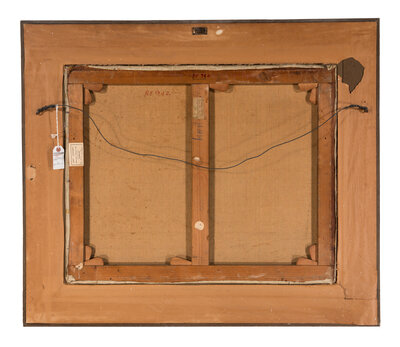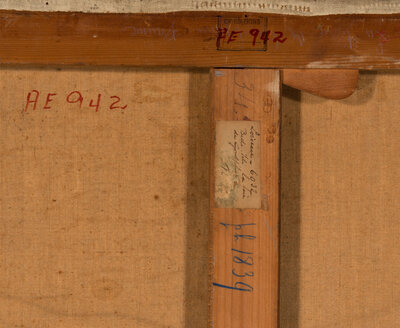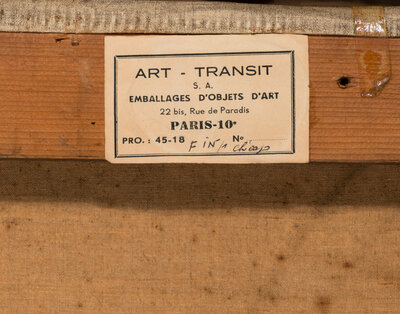Gustave Loiseau
(French, 1865–1935)
Belle-Île, La Baie de Goulphar, 1900
Sale 2087 - Impressionist and Modern Art, Featuring the Collection of John and Rosetta Gernon
Oct 28, 2024
12:00PM ET
Live / Philadelphia
Own a similar item?
Estimate
$60,000 -
100,000
Price Realized
$85,725
Sold prices are inclusive of Buyer’s Premium
Lot Description
Gustave Loiseau
(French, 1865–1935)
Belle-Île, La Baie de Goulphar, 1900
Oil on canvas
Signed G Loiseau (lower left)
25 3/4 x 32 in. (65.4 x 81.3cm)
This lot is located in Philadelphia.
Property from the Estate of Dr. John Talbot Gernon and Mrs. Rosetta Place Gernon.
We wish to thank Mr. Didier Imbert for confirming the authenticity of the present Lot, which will be accompanied by a Certificate of Authenticity. This work is registered in the Archives Durand-Ruel under photo 1839.
Please note this work will be on view at our New York City office, at 32 E. 67th Street, from October 24th to October 26th (included), 9am-5pm.
Provenance:
The Artist.
Acquired directly from the above on September 4, 1900.
Galerie Paul Durand-Ruel, Paris.
Collection of Mr. Jean and Marie Louise d'Alayer (Marie-Louise was Paul's granddaughter), by 1949.
Hôtel Drouot (Maître Bellier), Paris, sale of June 27, 1955, lot 109.
Findlay Galleries, Chicago, Illinois.
Acquired directly from the above by the present owner.
Lot Essay:
Loiseau came late to painting, first learning the butchery trade before shadowing a house decorator. He only fully embraced the career in 1887, after receiving a small allowance from his deceased grandmother. A year following the final Impressionist exhibition, he studied sculpture and design at the École des Arts Décoratifs, and in 1889, he spent six months in the studio of landscapist Fernand Quignon.
At the latter’s suggestion, Loiseau went to Brittany, and spent some time in the small village of Pont-Aven, staying at the pension Gloanec, where Gauguin had settled in the summer of 1886, and where he befriended Maxime Maufra and Henry Moret. Although Loiseau came back to Paris in the fall, he returned to Brittany every summer after that and painted many canvases there, including the present work, set on Belle-Île-en-mer, a large rocky island off Quiberon, in Morbihan.
While his first biographers tried to link his work to that of Gauguin due to the Pont-Aven connection, Loiseau never saw Gauguin as a mentor. In fact, they only met once in 1894, and Loiseau didn't adhere to the Synthetist aesthetics, preferring to paint on the motif instead. With its luminous palette, rich impasto and broken brushstrokes, the present painting certainly proves it. It boasts all the hallmarks of the Impressionist movement. The technique, a series of short and agitated brushstrokes hints at the work of Camille Pissarro, whom Loiseau effectively revered, and whose work he studied at length during the artist’s memorial retrospective held at the Durand-Ruel Gallery in Paris in 1904. The subject, on the other hand, is a direct reference (and homage) to Claude Monet, who visited Belle-Île in the summer of 1888 and produced a series of canvases which showcase the island's hostile environment. While in the rain, fighting storms and standing on uneven terrain, Monet had dubbed the island "sinister, diabolical but superb." The present work, specifically, depicts the Bay of Goulphar, a natural harbor of small, sharp rock formations, which Monet depicted many times more or less close to the sea, and which prompted him to adopt a serial practice that would become his hallmark.
Loiseau's relationship to Brittany, then considered a foreign and almost forgotten piece of land, echoed that of many artists at the time who fled the hyper-industrial Paris to experience a sense of raw, untouched beauty and reconnect with an old, almost mystical force of Nature. Swept by constant winds and frequently battered by impressive tides and storms from the Atlantic, Belle-Île certainly proved to be the perfect refuge for any artistic soul tempted to flee the civilized, modern world. As proven by the ominous rocky formations jutting out of the sea as sharp needles in the present work, it was also not an easy place to access. For Loiseau, as for Monet some twenty years before him, such arduousness reinforced their artistic curiosity. The subject thus became a pretext to pour even more energy, and emotion onto the surface of the canvas. Through the present work, Loiseau definitely proves his Impressionistic sensibilities, and uses his paint not only to suggest the landscape he witnessed, but to make the viewer feel it and appreciate its primitive aspect. The lumpy, heavy impasto thus becomes the rocks Loiseau once stood on; the calm sea, as well as the gentle breeze pushing the red sails away, convey the salty air the artist felt on the particular day he recorded the scene. In the end, the painting contains a part of Brittany within itself, and through a transient, fugitive and fleeting touch (hallmarks associated with Impressionism itself), the viewer is transported to where it all began.
Condition Report
Auction Specialist
